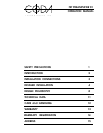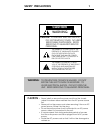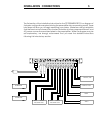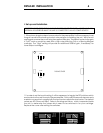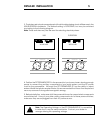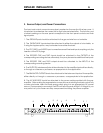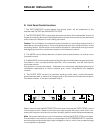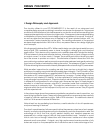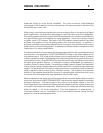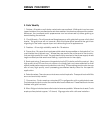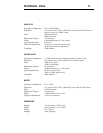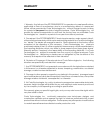
8
DESIGN PHILOSOPHY
I. Design Philosophy and Approach
The circuitry utilized in your FET PREAMPLIFIER 01 is the result of an advanced and
complete design process combining innovation and proven fundamentals. This process
avoids both the limitations of total adherence to convention and the flaws resulting from
inappropriate application of clever circuit gimmicks. Our approach demands painstaking
consideration of every facet of each design choice regardless of how small. Analytical,
as well as subjective techniques are all applied in an open-minded fashion with “no
compromise” musical perfection as the goal. The resulting refinement of the product
escapes simple explanation. With this in mind, we present here a few design highlights
and concepts.
All voltage gain is derived from FETs. While careful design can yield good results from any
device type, FETs consistently seem to have the edge in voltage gain and interface
applications. This is borne out by superior sonic qualities observed in subjective testing.
FETs are inherently transconductance devices, meaning that an input voltage controls
an output current. In other words, it “senses” the audio signal without drawing current
from the source to provide an output. This eliminates complex interactions with the
source allowing maximum performance from each system element and greatly reducing
the chance of cable characteristics altering the sound. The absence of input current in
FETs also allows high bias currents for linearity and speed without sacrificing DC parameters.
While excellent capacitors for coupling use exist, there can be no doubt that a signal
path free of coupling caps yields the best possible signal integrity. The DC stability of the
circuit eliminates the need for any questionable DC servo circuits or coupling capacitors.
We make no AC compromises for DC performance, however. Our key design choices
provide not only inherent DC stability, but also optimized AC performance throughout
the audio region and well beyond. These choices include the use of top quality dual FETS
in differential configurations for all voltage gain. Because the signal in these stages is
handled in a balanced manner, rejection of unwanted noise and modulation from
external sources is extremely high. This rejection extends even to noise which may
originate within the circuit from support circuity such as current sources. Stray RF signals
are also rejected well.
In the phono stage where the necessary equalization requires the use of capacitors, we
use only high grade film types. These and other equalization components were carefully
chosen to maintain response to within .2dB of RIAA standard. An additional subsonic
rolloff at 14 Hz serves to reduce IM Distortion.
Noise is kept low by paralleling input devices, careful selection of circuit impedances,
and pre-screening of devices.
The class A complimentary followers used to drive the preamp output are of such speed,
linearity, and low output impedance that no feedback correction is required or used. The
advantage of this is that the circuit’s perfect stability and transient response are
preserved into a wide range of difficult and unpredictable loads. Variation in sound
which could occur through interactions with interconnect cables and other system
elements are thus avoided. A simple, very high performance inverter provides a fully
balanced output on the preamplifier which allows the user to take advantage of the



